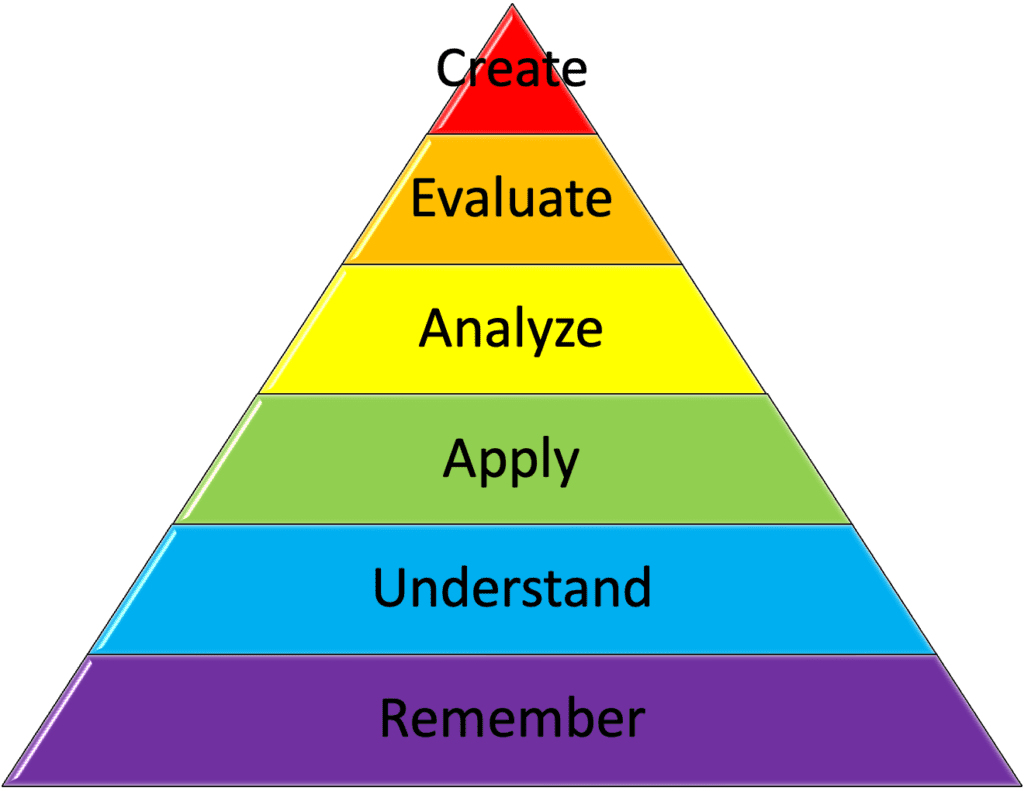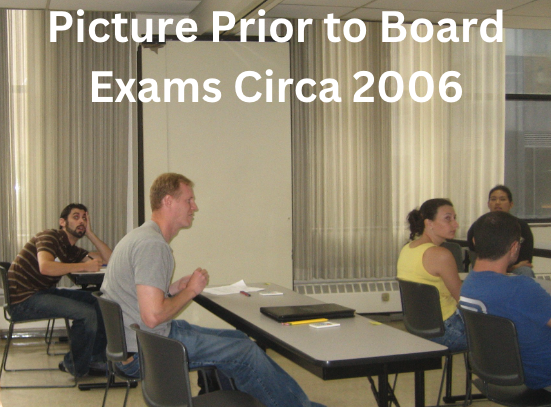Authored by Leland Jaffe DPM on December 30, 2024
As we approach the eve of a new year, it’s only natural to reflect on the past and set our sights on the future. For many of us, the upcoming year represents a fresh opportunity for growth and setting new goals in our professional lives. In my journey for personal and career development, I’ve outlined my personal goals for the year ahead using the SMART goals framework. I am a much bigger fan of creating goals, as opposed to New Year’s resolutions. Goal setting is a great opportunity at the beginning of the year to outline specific aspirations for the year ahead, and this blog post is dedicated to setting my SMART professional goals for 2024.
Why Create SMART Goals?


Creating SMART professional goals offers numerous benefits that contribute to individual and organizational success. Firstly, smart goals, which are Specific, Measurable, Achievable, Relevant, and Time-bound, provide clarity and precision, helping individuals articulate exactly what they want to achieve. Setting goals enhances focus and directs efforts toward meaningful outcomes. The measurable aspect ensures progress tracking, fostering a sense of accomplishment as milestones are met.
Additionally, the achievability criterion encourages setting realistic goals that challenge but do not overwhelm, promoting motivation and sustained effort. The relevance factor ensures alignment with broader objectives, enhancing the overall impact on personal and organizational success. Finally, the time-bound nature instills a sense of accountability, prompting timely action and preventing procrastination. In essence, smart professional goals serve as a roadmap for continuous improvement, enhancing productivity, and motivation, and overall have a positive impact on career fulfillment.
My SMART Professional Goal For 2024
S: Specific goal:
I aim to increase my blog’s monthly traffic by 50% within the next six months through consistent engagement with this community, SEO optimization, and active engagement on social media platforms. To achieve this, I will publish at least two high-quality, SEO-optimized blog posts per week, promote each post across multiple social media channels, and collaborate with other experts for guest blog posts. Setting measurable goals allows for progress tracking and provides a sense of accomplishment along the way. Breaking down larger objectives into smaller, manageable tasks helps to maintain momentum and motivation.
M: Measurable: Track Progress and Celebrate Milestones
Measuring a blog’s traffic is crucial for understanding its performance, audience engagement, and the effectiveness of various strategies. Here are several ways I plan to measure my blog’s traffic in the year ahead:
1. Google Analytics:
-
- Setting up Google Analytics on your blog to get detailed insights into your site’s traffic.
-
- Monitor metrics such as page views, unique visitors, bounce rate, average session duration, and other metrics.
2. Pageviews:
-
- Track the total number of pages viewed on my blog, as this is a key performance indicator. This metric provides a general indication of the overall traffic volume to my website
3. Unique Visitors:
-
- Identify the number of distinct individuals visiting my blog. This helps gauge the size of your audience and how many individuals are engaging with your content. My goal is to provide readers with high-quality content that they find useful and connect with, and this metric will determine if my blog is drawing in new readers.
4. Bounce Rate:
-
- Measure the percentage of visitors who navigate away from the site after viewing only one page. A high bounce rate may indicate that visitors aren’t finding what they expected or that your content needs improvement.
5. Session Duration:
-
- Analyze how long, on average, visitors stay on your blog. A longer session duration often indicates more engaging content.
6. Traffic Sources:
-
- Understand where your traffic is coming from. Sources can include organic search, direct traffic, social media, referral links, and others.
7. Keyword Rankings:
-
- Keep an eye on your blog’s performance in search engine results for target keywords. This can be done using tools like Google Search Console or third-party keyword tracking tools
8. User Surveys and Feedback:
-
- Collect feedback from your audience through surveys or comments to understand their preferences and areas for improvement.
A: Achievable: Set Realistic Targets
While it’s essential to dream big, setting achievable goals prevents frustration and burnout. By evaluating my skills, resources, and potential challenges, I’ve ensured that my goals are within reach yet challenging enough to inspire growth and achieve my long term goal and desired outcome. My achievement/realistic goal is to increase my traffic by 50% during the first 6 months of 2024.
R: Relevant: Align Goals with Your Vision – Know your why!
Every goal should align with a broader vision of personal growth goals and professional success. By ensuring relevance, I am investing my time and energy into pursuits that genuinely contribute to my long term objectives. My vision of this website/blog includes the following:
Know Your Why!
1. Provide a platform for networking among educational and healthcare professionals
2. Collaborate with other educators to share best practices for the betterment of student education
3. Share medical knowledge with students, residents, and physicians
My initial goal of increasing traffic to my website is to increase my reach to other educators and healthcare professionals for the main purpose of collaboration and professional networking. Creating this blog and website is the best way to achieve my short-term goals as well as long-term goals.
T: Time-bound
A goal without a deadline is merely a wish. Assigning specific timeframes to each objective creates a sense of accountability and commitment. This time-bound approach ensures that I stay focused and make steady progress throughout the year.
The time frame that I’ve set is 6 months to increase the traffic to my blog by 50%.
Do You Know Your “Why”?


Increasing traffic to an education blog can offer several benefits for educators. Here are some of the reasons for me setting this goal for next year:
1. Wider Reach:
-
- More traffic means a broader reach. I can extend my impact by reaching a larger audience, including students, fellow educators, and even professionals interested in this educational content.
2. Enhanced Visibility:
-
- Increased blog traffic contributes to improved visibility in search engines. This can result in higher rankings for relevant keywords, making it easier for individuals to discover and engage with my content.
3. Resource Distribution:
-
- Educators often create valuable resources, lesson plans, and teaching materials. Higher blog traffic allows for wider distribution of these resources, benefiting a greater number of educators and students and creating new opportunities for collaboration.
4. Community Building:
-
- A popular blog can foster a sense of community among educators, and increase personal relationships. Increased traffic encourages more comments, discussions, and interactions on the blog, creating a virtual space for educators to connect and share insights.
5. Professional Development:
-
- Educators can use their blogs to document their professional development journeys, share reflections, and offer real life tips to others in the field. Higher blog traffic means more opportunities to connect with like-minded professionals and learn from one another.
6. Career Opportunities:
-
- A well-visited education blog can open up new career opportunities for educators. It might lead to invitations for speaking engagements, collaboration opportunities, or even partnerships with educational organizations for career advancement.
7. Student Engagement:
-
- Educators can use their blogs to share supplementary materials, study guides, and additional resources that enhance student learning. Increased blog traffic means more students can benefit from these resources such as my daily quizzes or cheat sheets.
8. Advocacy and Impact:
-
- Educators often have valuable perspectives on education policies, teaching methodologies, and other critical issues. A popular blog can serve as a platform for advocacy, allowing educators to amplify their voices and impact positive change in the education sector.
9. Continual Learning:
-
- Engaging with a diverse audience can expose educators to new ideas, perspectives, and teaching methodologies. The feedback and discussions generated by increased blog traffic contribute to continual learning and professional growth.
Setting My ‘SMART’ Professional Goals for 2024 – Conclusion
As I embark on this journey toward my SMART professional goals for 2024, I am filled with excitement and determination for the following year. By incorporating the principles of Specific, Measurable, Achievable, Relevant, and Time-bound into my action plan, I am confident in my ability to achieve significant growth and success next year. I encourage everyone to join me in setting SMART goals for the year ahead, unlocking our full potential, and embracing the opportunities that await us in our professional lives. Together, let’s make 2024 a year of unparalleled achievement and success. NOW is the best time to start setting goals for 2024.
Comment below on what your ‘SMART’ goals are for 2024!


Leland Jaffe DPM, FACFAS
Associate Professor at Rosalind Franklin University of Medicine and Science
North Chicago, Illinois







